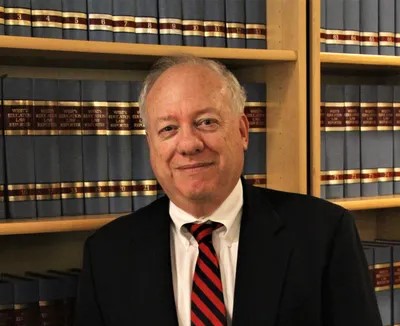Before the enactment of I.R.C. §2036(c) by the Revenue Act of 1987, transactions were often undertaken in order to stabilize or “freeze” the value of certain assets, for wealth transfer tax purposes, in the hands of older family members, while permitting any future appreciation attributable to the assets to inure to the benefit of younger family members. In effect, I.R.C. 2036(c) treated freezes as “open” transactions, by providing that appreciation accruing after the freeze would be included in the transferor’s wealth transfer tax base if the interest transferred to a family member was more likely to appreciate than the interest retained.
Section 2036(c) was viewed as overly broad and unfair. As a result, it was repealed retroactively by the Revenue Reconciliation Act of 1990 (“Act”). However, the Act adopts another method of eliminating certain potential advantages of freeze transactions. These provisions are contained in a new chapter of Subtitle B of the Code – Chapter 14.
Overview of Chapter 14
In large measure, Chapter 14 treats freeze transactions as “closed” for wealth transfer tax purposes, but artificially values the property interests at the time the transaction is first treated as complete for estate or gift tax purposes. As a general rule, in determining whether a gift has been made, or the amount of the gift, the value of certain interests retained by the transferor are ignored. Therefore, in effect, the value of the gift is increased.
Chapter 14 consists of four sections. I.R.C. §2701 establishes special valuation and deemed transfer rules for equity-type interests and associated rights in corporations and partnerships. I.R.C. §2702 provides special rules for transfers of interests in trust, joint pur chases and similar transactions. These new rules are intended, in part, to eliminate the gift tax benefits of so-called “grantor retained income trusts” (GRITs). I.R.C. §2703 establishes statutory requirements in order for a buy-sell agreement, option, or other restrictive agreement to be taken into account in determining an asset’s estate tax value. I.R.C. §2704 overrules Estate of Harrison, T.C. Memo 1987-8, and prescribes special valuation and deemed transfer rules in cases involving lapsing liquidation and voting rights.
General Comment on the New Sections
Chapter 14 is extremely complex and, like Section 2036(c), raises many questions about its proper application. Some of these may be resolved by upcoming regulations but others appear to arise from technical defects that will require legislative correction. The statute also is unfair in three broad respects. First. individuals not involved in the transaction (or not even aware of its existence) can be subject to tax. 1 Second, the statute intentionally “overvalues” property, with the result that the amount of tax is not directly related to the ability to pay. Third, transferors are deemed to have made gifts of property owned by others (e.g., interests held by the transferor’s stepgrandfather-in-law) and are liable for the tax generated.
Section 2701
No. 1: The value of any common stock will be determined by first valuing the corporation as a whole and then subtracting the value of any preferred stock. (A comparable rule applies for purposes of valuing interests in a partnership.)
Subtraction Method
l.R.C. §2701 provides, in part, that when common stock is transferred and preferred stock or rights are retained, certain preferred interests and associated rights are to be valued at zero for purposes of determining the amount of the gift. I.R.C. §2701 does not direct that the value of the preferred stock be subtracted from the total value of the corporation for purposes of valuing the common stock. However, the direction that the retained interests be valued at zero (as opposed to a direction that they constitute a gift by the transferor) appears, in large measure, to be consistent with the basic “approach” of Chapter 14 and suggests that this is the basic rule of the section.
The Senate Finance Committee Explanation to S. 3209 (predecessor to H.R. 5835), October 18, 1990, at 53-54 (hereinafter *Senate Explanation”), states that subtraction is the general method by which more junior equity interests (such as common stock) are to be valued. The Conference Report to H.R. 5835, H.R. Rep. 101-964, 101st Cong., 2d Sess., 150 (hereinafter “Conference Report”), states that the Chapter 14 rules “rely on present law principles that value residual interests by subtracting the value of preferred interests from the value of the entire corporation or partnership, with an adjustment to reflect the actual fragmented ownership.”
The subtraction method usually does not produce a result which represents the fair market value of junior equity interests. It fails to take into account that in actual fact the sum of the parts of a corporation or partnership are not equal to the value of the entity as a whole. Accordingly, if the statute is construed as directing the use of the subtraction method, it will further erode the fairness of the wealth transfer tax system, which is founded upon the notion that the amount of tax should be based upon the fair market value of the asset and, thus, directly related to the transferor’s ability to pay.
No. 2: In effect, whenever a property owner transfers (even for full value), common stock to Family Members, the value of any preferred stock held by the property owner or Applicable Family Members is treated as a gift to the transferee of the common stock. However, the value attributable to the preferred interest’s entitlement to cumulative dividends (or non-cumulative dividends elected to be treated as cumulative) and/or liquidation-type rights which must be exercised at a fixed time and for a fixed amount will not be considered a gift. (A similar rule applies to interests in partnerships.) 2
Basic Deemed Gift Rule
Specifically, I.R.C. 2701(a)(1) directs that certain interests retained by a transferor or certain “Applicable Family Members” (a defined term) are to be valued at zero if other interests in a corporation (or a partnership) are transferred to a “Member of the Family” (also a defined term).
Example A: A mother owns all of the common and preferred stock in a corporation. The common stock has a fair market value (determined under the “normal” definition of fair market value contained in Treas. Reg. §20.2031-2) of $800,000 and the preferred stock (also valued in the “normal” way) has a fair market value of $1,200,000. The preferred stock is entitled to receive non-cumulative dividends and is not required to be redeemed at a fixed time for a fixed price but may be “put” back to the corporation at any time for its $1,200,000 par value. The mother gives all of the common shares to her son. In determining the amount of the gift of the common shares, I.R.C. §2701 prescribes that the value of the preferred stock will be zero. If the mother sold the common shares to her son for their full value (determined in the “normal” way) of $800,000, she would still be deemed to have made a gift to him because the value of the preferred stock would be deemed to be zero.
I.R.C. § 2701 does not explain how the common stock (or partnership interest) is to be valued once the preferred interest is valued at zero. Where the retained interest is noncumulative preferred stock, Example 4 of the Senate Explanation indicates that the common stock should be valued as if the preferred stock did not exist. 3 Where a specific right is retained, Example 1 of the Senate Explanation suggests that a proportional share of the value of that right is added to the common stock. 4 Although It might seem, in theory, that the amount of the deemed gift will be the same whether the common interest transferred is valued as though the retained preferred interest did not exist or the value of the preferred interest is treated as a gift, in fact the result may be quite different. Presumably, Treasury Department Regulations, which Service representatives have announced will be published within the next few months, will clarify this important issue.
Applicable Retained Interests
Because of certain definitions and exceptions contained in the statute, I.R.C. § 2701 appears, as a general rule, to apply only where preferred-type equity interests in a corporation are retained and common-type (or more junior) equity interests are transferred. Specifically, the two types of rights which are valued at zero are (1) Distribution Rights, if the Transferor and Applicable Family Members control of the entity, and (2) Liquidation, Put, Call, Conversion or Similar Rights (the exercise or non-exercise of which affect the value of the interest transferred whether or not there is control.
Distribution Rights are, essentially, rights to periodic distributions from an enterprise with respect to an ownership interest therein, such as dividends. Certain cumulative dividends (or comparable payments from a partnership) known as “Qualified Payments,” discussed in detail below, are not included. I.R.C. § 2701(a)(3)(A) and (b)(1)(A). Liquidation, etc. Rights do not include rights which must be exercised at a fixed time and in a fixed amount. I.R.C. §2701(c(2). These two rights, non-cumulative distribution rights and non-fixed liquidation-type rights, are called Applicable Retained Interests. I.R.C. §2701(b(1). Thus, to be precise, it is not the preferred stock itself which is the Applicable Retained Interest but the Distribution Rights (e.g., dividends) and Liquidation-Type Rights (e.g., “put” right) of that stock. In many cases, presumably, these rights will tend to comprise all of the interests which the preferred stock represents.
Distribution Rights do not include distributions with respect to any Junior Equity Interests, such as the right to receive a dividend on common stock. I.R.C. § 2701(c)(1)(B)(i). Also excluded is any right to receive any guaranteed payment described in I.R.C. § 7O7(c) of a fixed amount. Because liquidation, put, call or conversion rights are “covered” by another provision of I.R.C. § 2701, they are excluded from the term Distribution Rights in order to avoid “double counting” and/or inconsistent rules. 5
Applies Only To Transfer To A Member Of The Family with Applicable Retained Interest Held by Applicable Family Member
I.R.C. § 2701 applies only to transfers of interests to a Member of the Family. That term means the Transferor’s spouse, a lineal descendant of the Transferor of the Transferor’s spouse, or the spouse of any lineal descendant of the Transferor or the Transferor’s spouse. I.R.C. § 2701(e)(1). Moreover, I.R.C. § 2701 applies only if, and to the extent that, the Transferor or any Applicable Family Member retains an Applicable Retained Interest. Applicable Family Members are the Transferor’s spouse (who is also a Member of the Family), an ancestor of the Transferor or the Transferor’s spouse, or the spouse of any such ancestor. I.R.C. § 2701(e)(2). Hence, except for transfers to and Applicable Retained Interests held by the spouse, the section, in essence, applies only when more junior equity interests are transferred to younger members of a family while more senior equity interests are retained by older members of the family. While the Applicable Retained Interests held by Applicable Family Members (e.g., the Transferor’s father-in-law) are valued at zero, it is the Transferor, not the Applicable Family Member, who is deemed to have made the gift. See Example (4), Senate Explanation.
Family Control
As indicated above, Distribution Rights are valued at zero only if the Transferor and family members “control” the corporation or partnership. I.R.C. § 2701(b)(1(A). The Transferor and family members are deemed to control the entity only if immediately before the transfer, the Transferor, the Transferor’s Applicable Family Members, and the siblings and lineal descendants of the Transferor and the Applicable Family Members control the entity. I.R.C. § 2701(b)(2) and (e)(3)(B).
“Control” with respect to a corporation means the holding of at least 50% by vote or value of the stock of the corporation. In the case of a partnership “control” means holding at least 50% of the capital or profits interest in the partnership or, in the case of a lifted partnership, holding any interest as a general partner. If the family does not have control, I.R.C. § 2701 will not apply to Distribution Rights including the right to receive non-cumulative dividends). Thus, such rights will not be valued at zero, but rather will be valued under the usual rules for determining the amount of any gift of the common stock.
Exceptions
The statute does not apply if either the interest transferred or the Applicable Retained Interest is marketable – that is, if market quotations are readily available as of the date of the transfer on an established securities market. I.R.C. § 2701(a)(1) and (a)(2)(A). In addition, consistent with the concept that the statute is intended to apply to transfers of junior interests when senior interests are retained, I.R.C. 2701 does not apply if the transferred and retained interests are “of the same class” or “proportionally the same” without regard to non-lapsing differences in voting power (or, in a partnership, with respect to non-lapsing differences in management and liability). I.R.C. § 2701(a) (2)(B) and(C).
Qualified Payment
A Distribution Right will not be valued at zero if it constitutes a Qualified Payment. 2701(a)(3)(A). A Qualified Payment is defined as a dividend payable on a periodic basis under any cumulative preferred stock (or a comparable payment under any partnership interest) to the extent that the dividend (or a comparable payment) is determined at a fixed rate. It includes a payment which bears a fixed relationship to a specified market interest rate, such as the Applicable Federal Rate determined under I.R.C. § 1274. I.R.C. § 2701(c)(3)(A) and (B). This means, for example, that the right to receive cumulative dividends equal to, for instance, nine percent of the par value of the preferred stock will not, as a general rule, be valued at zero under I.R.C. §2701 and, therefore, will not be treated as a gift under the section. 6
Transferor or Applicable Family Member Can Elect Zero Value Treatment
The Transferor or any Applica ble Family Member may elect to treat any payment right which would be a Qualified Payment as one which is not qualified. If the election is made, the right will be valued at zero. I.R.C. § 2701(c)(3)(C)(Q. The op tion to elect to treat a Qualified Payment as worth zero is given in order to avoid the deemed gift which can occur under I.R.C. § 2701 if the cumulative dividends (or comparable payments with respect to a partner ship) on a Qualified Payment are not paid when due. That deemed gift provision is known as the “Compounding Rule”, and is discussed below. The option is granted to the Applicable Family Member who holds the right to the Qualified Payments as well as to the Transferor because it is the Applicable Family Member who would be deemed to have made a gift (or who would have an amount included in his or her estate) under the Compounding Rule. However, if the Applicable Family Member elects to treat what otherwise would be a Qualified Payment as non-qualified, the Qualified Payment (e.g., cumulative dividend rights) will be valued at zero and will be deemed to constitute a gift by the Transferor at the time the transfer of the junior equity-type interest is made.
Transferor or Applicable Family Member Can Elect to Treat Any Distribution Right as a Qualified Payment
A Transferor or any Applicable Family Member may also elect to treat any Distribution Right (e.g., a right to non-cumulative dividends) as a Qualified Payment, to be paid in the amounts and at the times specified in the election. 7 I.R.C. § 2701(c)(3)(C)(ii). For example, although a right to non-cumulative dividends in preferred stock would be valued at zero (resulting in a deemed gift by the Transferor equal, perhaps, to the value of that dividend stream), the Transferor or any Applicable Family Member could elect to treat those dividends as though they were Qualified Payments. Again, it is important to note that with respect to any preferred stock or comparable interest in a partnership held by any Applicable Family Member, It is that person, and not the Transferor, who elects to treat the Distribution Right as a Qualified Payment. If the election is made, the Distribution Right will be regarded as a Qualified Payment and will not be valued at zero. 8 However, making the election to treat a Distribution Right as a Qualified Payment can make the Right subject to the Compounding Rule.
No. 3: Although the right to cumulative dividends (or non-cumulative dividends elected to be treated as cumulative) may not be treated as a gift, a gift (or estate taxable transfer) will be deemed to be made by the property owner or an Applicable Family Member who holds the preferred stock at a later time to the extent that a dividend is not paid within four years of Its due date. The value of the gift (or estate taxable transfer) is equal to an interest factor on the late dividend, and the dividend as well, if unpaid at the time of the taxable event.
Compounding Rule
If Qualified Payments (including non-cumulative Distribution Rights which are elected to be treated as Qualified Payments, but excluding those with respect to which zero value treatment was elected) are not paid when due, transfer tax consequences may ensue. I.R.C. § 2701(d). 9 For purposes of this Compounding Rule, any payment of a distribution made within 4 years of its due date is treated as having been made when due. I.R.C. § 2701(d)(2)(C).
Specifically, upon the occurrence of a Taxable Event, the taxable estate may be increased, or taxable gifts may be deemed to have been made, by reason of certain Qualified Payments not having been made when due. A Taxable Event occurs upon: (1) the death of the taxpayer (i.e., the Transferor or Applicable Family Member) who holds any Applicable Retained Interest (such as the right to cumulative dividends); (2) the life time transfer of the Applicable Retained Interest (except a transfer to the taxpayer’s spouse which results in the spouse’s being treated as the “substituted taxpayer”), 10 apparently, whether for full value or gratuitously; or, (3) when Qualified Payments are made “late” and the taxpayer elects to treat the payment as a Taxable Event. I.R.C. § 2701(d)(3)(A).
In brief, upon the occurrence of a Taxable Event I.R.C. § 2701(d) deems there to be a taxable gift or an increase in the taxable estate of the Transferor or Applicable Family Member. The gift is equal to the value of the Qualified Payments (determined as though they were paid as scheduled and reinvested at the discount rate used to value the Applicable Retained Interest), reduced by the Qualified Payments actually paid (also determined as though they were paid when due and reinvested at the discount rate used to value the Applicable Retained Interest) I.R.C. § 2701(d)(2)(A). In other words, for purposes of the deemed gift or·increase in the taxable estate, the value of any Qualified Payment is compounded by an interest factor if it is not paid within four years of its due date.
It appears that if by the time of the Taxable Event the late Qualified Payment has in fact been made, the Compounding Rule produces a gift equal only to the value of the “interest” attributable to the Qualified Payment during the period it was unpaid. However; if at the time of the Taxable Event the late Qualified Payment has not been made, the gift seems to include not only the value of the “interest” element but also the late Qualified Payment itself. If that is the case, there may be “double counting” with respect to cumulative dividends (and comparable payments in partnerships). For example, if late cumulative dividends are paid after a gift which gives rise to a Taxable Event, they presumably will still be includible in the taxable estate (or later gift tax base) of the Transferor (or Applicable Family Member) who receives dividends. Similarly, if late cumulative dividends have not been paid by the time the Transferor (or the Applicable Family Member) dies, the senior retained interest (e.g., preferred stock) will be included in the taxpayer’s estate and valued in the “normal” way. Presumably, the valuation will take into account that the stock is entitled to accrued but unpaid cumulative dividends. However, these dividends (if at least four years “late”) plus “interest” will also be includible as a deemed increase in the taxable estate under I.R.C. § 2701(d)(1)(A).
Limit on the compounding Rule
The statute contains a limit or “cap” on the amount of the deemed gift or increase in the taxable estate under the Compounding Rule. This limit operates much like former I.R.C. § 2036(c). The maximum increase under the Compounding Rule is limited to the “Applicable Percentage” of the excess (if any) of the appreciation in all junior equity (e.g., common stock) from the date of the original transfer to the date of the Taxable Event. The Applicable Percentage is defined as the percentage obtained by dividing the Applicable Retained Interest (e.g., preferred stock) held by the Transferor as of the date of the taxable event by the total number of shares which are of the same class as the Applicable Retained Interest outstanding as of the same date. I.R.C. § 2701(d)(2)(B).11 See Example (5), Conference Report.
Discount Rate
As indicated above, the Compounding Rule uses a discount rate to adjust for late Qualified Payments. The statute directs that the discount rate be the rate that was used to value the Applicable Retained Interest (e.g., preferred stock). Neither the statute nor its legislative history provides guidance as to how the discount rate is to be determined. Presumably, if in valuing the transferred interest (e.g., common stock) the appraiser used a certain discount rate to determine the value of the Applicable Retained Interest (e.g., preferred stock), that rate will be used. However, appraisers do not always use discount rates In valuing interests in business enterprises. 12 Moreover, apparently it is not the discount rate, used to determine the value of the interest transferred (such as common stock) but the discount rate used to determine the value of the Applicable Retained Interest (e.g., preferred stock) that is relevant. I.R.C. § 2701(d)(2)(A)(i)(ll). Usually. unless the value of the preferred stock is deemed to have been a gift under I.R.C. § 2701, the preferred stock itself would not have been valued in determining the value of a gift of the common stock.
Election to Terminate Compounding Upon Payment of a “Stale” Qualified Payment
As indicated above, the Compounding Rule applies when the Transferor (or Applicable Family Member) dies or makes a transfer of the Applicable Retained Income, and also if the taxpayer elects to treat the payment of a late Qualified Payment as a Taxable Event. The reason for this elec tion is that compounding ends only upon the occur rence of a Taxable Event. Thus, I.R.C. § 2701(d) allows the taxpayer to terminate the compounding for late Qualified Payments by electing to treat the payments of those stale Qualified Payments as a Taxable Event.
Qualified Payment Made Late But Within Four Years of Original Due Date
Because a Qualified Payment made within four years of its original due date is deemed to have been made on its original due date, no compounding for the late payment occurs. However, it is not clear whether the rule applies to an unpaid Qualified Payment upon a transfer of the Applicable Retained Interest by the taxpayer (or the death of the taxpayer). For instance, assume that a cumulative dividend due to be paid in 1991 remains unpaid at the time that the Transferor sells the preferred stock in 1993. Literally applied, it appears as . though the statute could treat the Transferor as having made a gift of the unpaid cumulative dividend upon the transfer of the preferred stock (although the amount of the cumulative dividend would not be compounded by the discount rate).
Spouse Treated As Substituted Transferor in Some Cases
Similar to former I.RC. § 2036(c), I.RC. § 2701(d)(3)(B) provides a special rule under which the spouse of the Transferor can “step into the shoes” of the Transferor for purposes of the.Compounding Rule. If the Applicable Retained Interest is transferred to the Transferor’s spouse and the transfer qualifies for the marital deduction, the spouse becomes the substituted Transferor and no taxable transfer is deemed to occur. This rule also applies to a transfer to the spouse for consideration. 13
Transfer to Applicable Family Member
If a Taxable Event involves the transfer by gift or sale of an Applicable Retained Interest to an Applicable Family Member other than a spouse Q.e., to an ancestor of the transferor or spouse, or a spouse of an ancestor), the Applicable Family Member becomes the substituted Transferor as to distributions accumulating after the transfer. I.R.C. §2701(d)(4)(B). Apparently, this means the Compounding Rule will apply to the property while in the hands of the Applicable Family Member.
No Rule Specified Where Transferee Re-Transfers
The statute contains no guidance as to the effect on the Compounding Rule where the transferee of the junior equity-type interest re-transfers that interest by sate or otherwise. It seems the Compounding Rule continues until a Taxable Event, in fact, occurs.
Liquidation Rights
Under IR.C. § 2701, Distribution Rights which are not Qualified Payments (either by their nature or by election) may be valued at zero. In addition, the statute provides that any liquidation-type right (liquidation, put, call, conversion or similar right) retained by the Transferor or any Applicable Family Member, the exercise or non-exercise of which affects the value of the transferred interest. will also be valued at zero. I.RC. § 2701(b)(1)(B) and (c)(2). However, this zero value rule does not apply to a liquidation-type right that must be exercised at a specified time and for a specified amount. I.R.C. § 2701(c)(2)(B)(i) 14 For example. if the interest (e.g., preferred stock) in the entity retained by the Transferor must be redeemed in two years for a fixed amount (e.g., $1 million) the liquidation right will not be valued at zero but rather will be valued in the “normal” way for purposes of determining the value of the gift of any interest transferred to the Family Member. There is also an exception to the zero value rule for rights to convert into a fixed number or percentage of shares of the same class as those transferred if the right is non-lapsing, is subject to adjustment for splits, etc., and is subject to adjustments like the Compounding Rule for unpaid distributions. (A similar rule applies for partnerships.) I.R.C. § 2701(c)(2)(C). Hence, it seems that if a cumulative dividend (which is not elected to be valued at zero) is not paid within four years of its due date, the number of shares into which the interest is convertible must be increased to reflect that the dividend has accrued but has not been paid, and further increased to reflect compounding at the discount rate, in order for the conversion feature not to be valued at zero.
Unlike Distribution Rights (e.g., dividend rights), the general zero value rule for liquidation-type rights applies regardless of whether the family has control of the entity. See Example (3), Senate Explanation. The taxpayer cannot elect to treat zero value liquidation type rights as though they have value, or to treat liquidation-type rights which must be exercised at a specified time and at a specified amount as having a zero value.
Although the liquidation-type rights subject to I.R.C. § 2701 would seem to be rights associated with equity-type interests, it appears they may also arise with respect to at least a convertible instrument as well. 15
Example B: A father holds all of the common stock and debt of a corporation. Debt holders have the right to convert the debt into equity. As a general rule, for purposes of determining whether the father made a gift to the daughter by the sale to her of his common stock, the conversion right of the debt will be valued at zero (and, presumably, the value, if any, of the conversion right will be deemed to be a gift to the daughter). See Example (1), Senate Explanation.
No. 4: Whenever preferred stock is entitled to cumulative dividends (or non-cumulative dividends which are elected to be treated as cumulative) and also has liquidation-type rights which would be valued at zero, any taxable gift will be determined by assuming that the liquidation-type rights are exercised in the manner which will maximize the amount of the gift. (A comparable rule applies for purposes of valuing interests in a partnership.)
Assumed Exercise of Liquidation-Type Rights To Minimize Value and Maximize Gift
Despite the fact, that as a general rule, liquidation-type rights (other than those which must be exercised at a fixed time and for a fixed price) are valued at zero, I.R.C. §2701(a)(3)(B) provides a special “lowest overall value” rule. Under this rule, it is assumed that a non-fixed liquidation-type right will be exercised so as to minimize the value of the Qualified Payments and rights retained (and thereby maximize the deemed gift made under I.R.C. § 2701) at the time the junior equity-type interest is transferred. This rule does not apply to liquidation-type rights that would not otherwise be valued at zero under I.R.C. § 2701. 16 It also applies only if Qualified Payments are retained. Thus, it appears that it the taxpayer elects to treat any Qualified Payment as non-qualified (so that it will be valued at zero) the special “lowest overall value” rule will not apply.
Example C: Father retains cumulative preferred stock (which he does not elect to treat as having a zero value) while giving common shares to his daughter. The cumulative dividend is $100 per year and the preferred stock may be redeemed at any time after two years for $1,000. Under I.R.C. § 2701, the value of the cumulative preferred stock is the lesser of (i) the present value of $100 paid each year for two years plus the present value of the redemption for $1,000 in two years or (2) the present value of $100 paid each year in perpetuity. See Example (1), Conference Report.
Under the foregoing example, derived from the Conference Committee Report which added this provision, it is assumed that the liquidation-type right is exercised at the earliest time it could be, and then that it is not exercised at all. Nevertheless, it is apparent under this special rule that the liquidation-type right will be deemed to be exercised at any point in time in which the Applicable Retained Interests (e.g., cumulative dividends and liquidation-type rights) have the lowest overall value. That might be a time other than the first time that the liquidation-type rights could be exercised, (e.g., if the amount paid upon exercise of the liquidation-type rights increases over time or the cumulative dividends decrease over time).
If the special “lowest overall value” rule applies, the liquidation-type rights will not be valued at zero under I.R.C. § 2701, but will be assigned the value they receive under the “lowest overall value” rule. I.R.C. § 2701(c)(2)(B)(ii)
No. 5: Common stock is worth at least 10% of the sum of all equity plus family (Transferor and Applicable Family Members) debt. (A comparable rule applies for purposes of valuing interests in a partnership.)
10% Minimum for Junior Equity
Where a property owner transfers a junior equity interest while retaining a more senior equity interest in the entity, all junior equity interests are given a minimum value equal to 10% of the sum of the value of all the equity interests in the entity (regardless of whether held by the Transferor or any Applicable Family Member) plus the value of any debt in such entity held by the Transferor or any Applicable Family Member. I.R.C. § 2701(a)(4). Therefore, regardless of the value of other interests in the entity, it is not possible to “zero out” the value of the common stock or comparable interest in the partnership.
Indirect Holding and Transfer Rules
Any interest held indirectly by an individual through a corporation, partnership, or other entity is treated as held by such individual for purposes of the section. I.R.C. § 2701(e)(3)(A). Except to the extent regulations provide otherwise, a contribution to capital, redemption, reorganization, etc., is treated as a transfer if the “taxpayer” or any Applicable Family Member receives an Applicable Retained Interest as a result of or (to the extent regulations provide) holds an Applicable Retained Interest after the transfer. I.R.C. § 2701(e)(5). This rule will not apply if the Transferor, the Applicable Family Members and Members of the Family hold substantially identical interests before and after the transaction. However, this latter exception does not apply to contributions to capital. See Examples (5) and (6) of Senate Explanation.
“Single Instrument” Problem
Regulations may provide that any Applicable Retained Interest may be treated as two or more separate interests. I.R.C. § 2701(e)(7). This rule seems to be intended to avoid having certain junior equity-type interests (such as common stock} which hold some “preferred” feature (such as a dividend preference) valued as zero. 17
Appropriate Adjustment Rule
If there is a later transfer (such as by death or gift) of an Applicable Retained Interest (e.g., a dividend stream) which has been valued under the statute, “appropriate adjustments” are to be made for purposes of the estate, gift and generation skipping transfer tax. I.R.C. §2701(e)(6). This rule is to prevent “double counting” but (depending in part on regulatory interpretation) it may be deficient. Neither the statute nor the legislative history indicates how the adjustment would be made. For example, it is unclear whether post transfer appreciation will be taxed on the later transfer of the Applicable Retained Interest, or what credit might be available on a later sale of the Applicable Retained Interest. Furthermore, it is unclear whether there will be a change in basis under l.R.C. § 1014(a) where the Applicable Retained Interest (such as preferred stock) is held at death by the transferor or an Applicable Family Member but is valued for estate tax purposes at zero because of a pre-death transfer by the transferor of another interest in the corporation or partnership. Because the change in basis rule under I.R.C. §1014(a) is an income tax rule and I.R.C. § 2701 is an estate, gift and generation-skipping transfer tax rule, the change in basis under the former section should be unaffected by the latter, and regulations may so provide. 18
Section 2702
General Rule: Any Retained Interest in a GRIT or similar arrangement is valued at zero. Therefore, the entire value of the property placed in the trust is a gift.
Special Valuation and Deemed Gift Rules for Transfers to Trusts and Similar Arrangements
Chapter 14 also establishes special rules for transfers of interests in trusts. I.R.C. § 2702. One purpose of these rules is to eliminate the valuation “benefits” of grantor retained income trusts (“GRITs”) and similar transactions such as “joint purchases.” In brief, a GRIT is an arrangement under which a property owner makes a gift equal to the value of the remainder interest in property, determined in accordance with Treasury Department tables promulgated under I.R.C. § 7520, by retaining the right to the income from the trust (or the use of the property) for a term of years. The Treasury Department tables compute the value of the income interest in a GRIT by reference to the Applicable Federal Rate, which changes monthly (it has generally been between 9.8% and 10.6%). When the grantor’s income interest terminates, the remainder is transferred to or for the benefit of the remaindermen (e.g., the grantor’s children) without the imposition of additional gift tax.
However, if the grantor dies prior to the expiration of the retained income interest, the entire value of the trust property is includible in the grantor’s estate under I.R.C. § 2036(a)(1). If the grantor retains the right to receive the property back in the event that he or she dies prior to the expiration of the retained income interest (a reversion), the actuarial value of the reversion also “reduces” the value of the taxable gift.
Former I.R.C. §2036(c)(6) imposed limitations on GRITs. However, I.R.C. § 2702, in effect, eliminates most GRITs altogether. I.R.C. § 2702 provides that if an interest in a trust is transferred to a Member of the Family (defined more broadly than in I.R.C. § 2701), the value of any interest retained by an Applicable Family Member will be zero, unless the retained interest is a Qualified Interest. I.R.C. § 2702(a). As a consequence, if, for example, a property owner transfers $1 million in trust for her descendants and retains the right to receive the income from the property for ten years, the entire $1 million is subject to gift tax. Under prior law, only 30% (approximately) of the $1 million, or $300,000 would have been subject to gift tax.
Unlike I.R.C. § 2701, I.R.C. § 2702 does not provide for an “appropriate adjustment” rule to avoid “double counting” with respect to retained interests. As a consequence, not only will the actuarial value of the retained income interest be subject to gift tax at the time that the property is transferred in trust, the income interest retained by the grantor will also be includible in the grantor’s gross estate (or subject to gift tax if it is transferred during lifetime). 19
Exception for Personal Residences
The above rules do not apply with respect to a transfer of property used as a personal residence by the grantor. I.R.C § 2702(a)(3)(A)(ii). Thus, for such property a GRIT still “works” (provided the grantor lives until the end of the term during which he or she has retained the right to use and occupy the personal residence).
A personal residence is not defined in I.R.C. § 2702. Seemingly, it includes a residence other than the principal residence of the property owner. A cooperative apartment would probably qualify as a personal residence. See I.R.C. § 121. No guidance is provided as to how much “land” can be considered part of a personal residence. Presumably, rules similar to those under other provisions of the Internal Revenue Code dealing with residences will control. Many other issues could arise with respect to the exception, such as what the effect would be if a portion of the residence were used as a business office.
Practitioners should be wary where the personal residence transferred is subject to indebtedness. If the grantor continues to make mortgage payments on the property, he or she will be making additional transfers to the remaindermen and it would appear that these transfers would be subject to I.R.C. §2702. It is possible that the Internal Revenue Service will provide that the payment of a mortgage note during the time that the grantor continues to occupy the property falls under the exception. However, until the matter is clarified by the Service, it may be appropriate to 0 payoff” any mortgage indebtedness. It is unclear what the effect will be under I.R.C. § 2702 if the residence is sold either shortly after (or long after) it is added to the GRIT. Probably, the Service will determine, based upon “all the facts and circumstances”, whether or not the transfer continues to come under the Personal Residence exception if the sales proceeds are added to the GRIT.
Tangible Property GRIT
I.R.C. § 2702(c)(4) creates a further exception for GRITS funded with certain tangible property, apparently including real estate. In order for this exception to apply, the tangible property must be such that the value of the remainder is not substantially affected by the “non-exercise of rights” by the holder of the term interest. For example, a “tangible property GRIT” could not be created of depreciable property (such as a commercial aircraft, drilling equipment or a bulldozer). The legislative history suggests that objects of art or raw land (which has development potential) might be placed in a tangible property GRIT.
The value of the interest retained in a tangible property GRIT is not determined by the Treasury Department tables but rather by what an unrelated third party would pay for such interest. I.R.C. § 2702(c)(4). It may be quite difficult, in some circumstances, to establish that value.
Joint Purchases
I.R.C. § 2702(c)(1) provides that the transfer of a life interest in property, or an interest for a term of years, to a Family Member will be treated as a transfer of an interest in trust subject to the above rules. In addition, if a person acquires a life interest or an interest for a term of years in property and “in the same transaction (or a series of related transactions)” a Family Member acquires an interest in the property (i.e., a joint purchase), the term interest holder will be treated as if he or she had acquired the entire property and then transferred the other interest to the Family Member in exchange for the consideration (if any) furnished by the Family Member. I.R.C. § 2702(c)(2).
Member of the Family
As indicated above, I.R.C. § 2702 applies only where an interest in the trust (or similar arrangement) is transferred to a Member of the Family. “Member of the Family” is more broadly defined under I.R.C. §2702 than it is under I.R.C. §2701. For purposes of I.R.C. § 2702, it includes (i) the individual’s spouse, (ii) an ancestor or lineal descendant of the individual or the individual’s spouse, (iii) any sibling of the individual, and (iv) the spouse of any person listed in (ii) or (iii). I.R.C. §§ 2702(e) and 2704(c)(2). As a consequence, a trust created by a stepmother for her stepson under which she retains the right to the income for a period of years will fall under the “zero value” rule of I.R.C. §2702. However, the same trust created by an uncle for his niece will not fall under that rule.
GRAT and GRUT Exceptions
As indicated above, I.R.C. § 2702 assigns value only to Qualified Interests. Qualified Interests are (a) the right to receive a fixed amount payable at least annually (an annuity), (b) the right to receive a fixed percentage of the annual fair market value of the trust property at least annually (a unitrust interest), and (c) a non-contingent remainder if all of the other trust interests are described in (a) and (b). I.R.C. § 2702(b). The value of a Qualified Interest is determined under I.R.C. §7520, and is then subtracted from the value of the property being transferred to determine the amount of the gift. Thus, I.R.C. § 2702 adopts rules similar to those currently in place for charitable remainder (and lead) trusts. It is not clear whether all of the extremely detailed requirements of the charitable remainder and charitable lead trust regulations must be met in order for the annuity/ unitrust exception to apply under I.R.C. § 2702.
Although no value will be assigned. it appears that the grantor could retain a contingent reversion to take effect if he or she died while entitled to the annuity or unitrust stream. A granter might wish to do that in order to dispose of the property in a way different from that which would occur under the terms of the granter retained annuity or unitrust. However, it seems that the trust agreement itself could provide for alternate dispositions in the event that the grantor died before the end of the annuity or unitrust payments, at least with respect to the portion of the Grantor Retained Annuity Trust (GRAT) or Grantor Retained Unitrust (GRUT) which would be included in the grantor’s estate under I.R.C. § 2036(a)(1). The grantor’s retained annuity or unitrust stream will have a greater value if it is non-contingent – that is, if the annuity or unitrust stream does not terminate upon the grantor’s death but is payable to his or her estate for a fixed period of years. However, retention of the right to an annuity or unitrust stream after the grantor dies may interfere with any marital deduction the grantor may wish to secure if the property is includible in the grantor’s estate. Cf. Rev. Rul. 89-89, 1989-2 C.B. 231.
As in the case of a charitable remainder (or lead) trust, the value of the annuity or unitrust interest {and the corresponding value of the remainder) depends on several factors. Among them are the payout rate, the frequency of payments {such as monthly or yearly) and the length of time during which the grantor retains (or is deemed to retain) an interest in the trust. 20 It will be noted that it is possible, with a GRAT, to “zero out” the value of the remainder (i.e., the gift). Essentially, if the grantor envisions that the trust will earn, on an average, more than 120% of the Applicable Federal Rate for the month of the transfer, it will be possible to transfer some value to other family members free of transfer tax (unless the grantor dies during the annuity term).
If the grantor does die during the annuity or unitrust term, unlike a regular GRIT it appears that the full value of the GRAT (or GRUT) property may not be includible in the grantor’s estate. See Rev. Rul. 82-105, 1982-1 C.B. 133; Rev. Rul. 76-273, 1976-2 C.B. 268. These rulings in the charitable remainder trust context observe that an annuity or unitrust interest is not necessarily equivalent in value to a retained right to the entire income from the property. Presumably, the same rules would apply under I.R.C. § 2702.
Section 2703
Buy-Sell Agreements
Prior to the enactment of I.R.C. § 2036(c), regulations and case law supported the proposition that a buy-sell agreement could fix the estate tax value of an asset. See, e.g., Estate of Bruno Bischoff, 69 T.C. 32 (1977). However, former I.R.C. § 2036(c)(7)(C) as amended by the Technical and Miscellaneous Revenue Act of 1988 limited the circumstances under which the estate tax value of an asset would be determined pursuant to such an agreement.
I.R.C. § 2703(a) provides that in valuing property for estate, gift and generation-skipping transfer tax purposes, any agreement, option or other right to acquire or use property at less than its fair market value (determined without regard to such agreement, etc.), or any restriction on the right to use or sell the property, is to be disregarded. However, there is an exception for an agreement, etc., that (1) is a bonafide business arrangement, and (2) is not a device to transfer the property to a member of the decedent’s family 21 for less than full and adequate consideration in money or money’s worth, and (3) has terms comparable to similar arrangements entered into by persons in arms’ length transactions. I.R.C. § 2703(b).
The first two requirements are similar to those set forth in the Treasury Regulations. See Treas. Reg. § 20.2031-2(h). However, under I.R.C. §2703, each is an independent test. The Senate Explanation states that the statute adopts the reasoning of St. Louis County Bank v. United States, 67 4 F.2d 1207 (8th Cir. 1982), and rejects the suggestion of other cases that maintenance of family control, standing alone, assures the absence of a “device”. As to the third requirement, the legislative history suggests that it might be satisfied by expert testimony or by some other showing of the general practice of unrelated parties. Senate Explanation at 157. The Conference Report at 60 suggests that any generally accepted methodology in that business or industry will be accepted.
The new requirements apply to agreements, options, rights or restrictions entered into or substantially modified after October 8, 1990.
Section 2704
No. 1: A gift (or increase in the estate) occurs when voting or liquidation rights (or other rights as specified by regulations) lapse but the family retains “control.”
No. 2: The tax value of property Is determined without regard to any restriction which limits the ability of the business to liquidate and the restriction either lapses after transfer or the transferor or a family member can remove it.
Anti-Harrison Rule
In Estate of Harrison v. Commissioner, 52 TCM 1306 (1987), a father formed a partnership with his sons. The father retained both limited and general partnership interests while his sons received limited partnership interests. The father contributed about $59 million of property to the partnership. As a general partner, the father had the right to force the partnership to be liquidated and to recover his entire contribution. Under a “buy-sell” agreement, the sons purchased their father’s general partnership interest for $700,000 at his death. The court held, in effect, that when valued without regard to the general partnership interest, the father’s limited partnership interest was worth only $33 million. Therefore, the amount includible in the father’s gross estate was $33,700,000, rather than the $59 million the limited partnership was the worth in the father’s hands immediately prior to his death. The reason for this was his ability, as a general partner, to force a liquidation of the partnership.
I.R.C. § 2704 is intended to overturn the result in Harrison and prevent the use of similar arrangements. Specifically, under I.R.C. § 2704, if voting or liquidation rights (or similar rights as provided by regulations) in a corporation or partnership lapse, and if the individual and Members of the Family (a defined term) control the entity before and after the lapse, the lapse is treated as a gift or is included in the individual’s estate. I.R.C. § 2704(a)(1). The amount of the gift (or estate inclusion) is the excess of the value of the individual’s interest in the entity before the lapse (determined as if the liquidation and voting rights were non-lapsing) over the value after the lapse. See Examples (6) and (7), Conference Report.
In addition, the value of an interest in a corporation or partnership transferred to a Member of the Family is determined without regard to any Applicable Restriction if the Transferor and Member of the Family control the entity after the transfer. An Applicable Restriction is one which limits the ability of the business to liquidate and either lapses after the transfer or can be removed by the Transferor or any Member of the Family after the transfer. There is an exception for a restriction imposed under a third party financing arrangement or Federal or State law. I.RC. § 2704(b). Regulations can also apply this rule to other restrictions. See Example (8), Conference Report.
Member of the Family is more broadly defined for purposes of I.R.C. § 2704 than for purposes of I.R.C. § 2701, and means: 1) the individual, 2) his or her spouse, 3) any ancestor or lineal descendant (and any spouse of such ancestor or lineal descendant) of the individual or his or her spouse, and 4) siblings (and spouses of siblings) of the individual. I.R.C. § 2704(c). The attribution rules (through entities) of l.R.C. § 2701 apply. Control has the same meaning as it does under I.R.C. § 2701.
Effective Dates
Generally, the new rules are applicable to transfers after October 8, 1990. As noted above, with respect to buy-sell agreements and similar arrangements, the rules also apply if an existing agreement is “substantially modified” after October 8, 1990.
Change in the Gift Tax Statute of Limitations
If a gift is deemed to have been made (or increased) under l.R.C. §§ 2701 or 2702 (relating to certain transfers with respect to partnerships, corporations and trusts) and is not disclosed on the gift tax return in a manner adequate to apprise the Internal Revenue Service of the nature of the transaction, the gift tax statute of limitations will not ”run” under I.R.C. § 6501.
Conclusions
The repeal of I.R.C. § 2036(c) and the enactment of Chapter 14 represent extremely important developments in estate planning. Although some may regard the new law as an “improvement,” it forecloses many planning opportunities which were authorized under prior law and is likely to represent an impediment to many business transactions. Moreover, in the absence of regulations, it is difficult to determine what effective planning may be accomplished. Future issues of The Chase Review will explore the options once the regulations (promised to be released soon) are, in fact, promulgated.
Updates
IRS Approves Disclaimers with Respect to Some, but Not All, Jointly Owned Assets After Death of First Tenant
Under
Under I.R.C. § 2518, a beneficiary is given nine months after the date on which the transfer creating the interest is made to disclaim the interest. Under Treasury Regulation§ 25.2518-2(c), the nine-month period for making a disclaimer generally is determined with reference to the time of the taxable transfer (e.g., taxable gift) creating the interest in the disclaimant. In certain circumstances, the Internal Revenue Code specifically provides, or the Internal Revenue Service (“IRS”) has concluded, that a gift has not been made upon the creation of a joint tenancy by a property owner, even though that property owner contributed all of the assets to the joint tenancy.
In Private Letter Ruling 9012053 (December 27, 1989), at his death a decedent and his wife owned jointly with right of survivorship (constituting a tenancy by the entirety) certain bank accounts, mutual fund accounts, a brokerage account, bonds and a home. In addition, the decedent during his life had created a revocable trust which at his death passed to his wife and children.
With respect to the revocable trust, the IRS ruled that the nine-month period during which the surviving spouse had to disclaim her interest start at the date of her husband’s death. That transfer was not com plete until the husband died and his power to revoke the trust expired. The IRS also ruled that the nine month period during which the surviving spouse had to disclaim any interest in the joint bank accounts commenced upon the date of the husband’s death be cause. under Treasury Regulation § 25.2511-1(h)(4), a gift is not made (and therefore a taxable transfer does not occur) upon the creation of the joint account. This is so, the Regulation states, because the creator of the account could regain the entire fund without the other co-tenant’s consent. (It should be noted that, under the law in certain jurisdictions, the respective rights of the tenants under a joint bank account may not be as described in the Regulation.)
The surviving spouse’s interest in the brokerage account also had to be disclaimed within nine months of the decedent’s death. In Revenue Ruling 69-158, 1969-! C.B. 226, the IRS had determined that the creator and sole contributor of a joint brokerage account, in which securities ere registered in the name of a nominee, had not made a completed gift until the other joint owner drew on the account. Thus, the IRS ruled that the time to disclaim with respect to the brokerage account did not begin until nine months after the death of the joint tenant who was the sole contributor.
However, in the instant case, the surviving spouse had made withdrawals from one of the mutual fund accounts. Therefore, the IRS found that the wife was deemed to have accepted one-half of the amount withdrawn, the amount attributable to her survivorship interest. As a result, she could not make a qualified disclaimer with respect to one-half of the amount withdrawn.
Moreover, on the basis of Estate of Dancy v. Commissioner, 872 2d 84 (4th Cir. 1989) and McDonald v. Commissioner, 852 F.2d 1494 (8th Cir. 1988), the IRS concluded that the mutual fund accounts and the bonds could be disclaimed within nine months after the husband’s death. Dancy and McDonald are cases in which the IRS argued, unsuccessfully, that the non-contributing co-tenant had to disclaim within nine months after the joint tenancy was created, rather than nine months after the death of the person who created the joint tenancy. It is unclear whether this ruling shows acquiescence by the IRS to those decisions or whether it is limited to the facts of this ruling, as the case apparently would go to the Fourth Circuit.
The IRS also held that, because the creation of the joint tenancy in the real estate was not considered a gift to the surviving spouse under l.R.C. § 2515(a) (prior to its repeal in 1981), the widow had nine months after the death of her husband in which to disclaim her interest in the home.
In addition, because the decedent held all incidents of ownership in the life insurance policies on his life up until his death and had not assigned those incidents or made an irrevocable beneficiary designation, the IRS determined that the widow’s nine-month period for disclaiming her interest in the life insurance proceeds began at her husband’s date of death.
The IRS also found that the power of the decedent’s children, as trustees, to distribute principal to themselves as required for their support and education and to relieve “emergencies” was a power limited by an ascertainable standard relating to health, education, support and maintenance. Accordingly, it would not be regarded as a general power of appointment under I.R.C. § 2041. This ruling was based on a decision by the Fourth Circuit which, the IRS noted, would be precedent in this case. See Martin v. U.S., 780 F.2d 1147 (4th Cir.1986).
It is interesting to note that the IRS’s conclusion that this standard was ascertainable was based, in part, on the assumption that “there is no Virginia decisional or statutory law in the future that might indicate a contrary result.” (emphasis added). Moreover, the entire ruling was deemed to have no force and effect “(i)f there is a change in material fact or law (local or federal) before the transactions considered in this ruling take effect … ”
IRS Tells How to Make a “Protective”, “Reduce to Zero” QTIP Election on Form 706
Unlike other interests which may qualify for the marital deduction, an executor must make an affirmative election on the United States Estate Tax Return (Form 706) in order for property described in I.R.C. § 2056(b)(7) to qualify for the marital deduction as qualified terminable interest property (“QTIP”). Indeed, the current Form 706 requires that a box on Schedule M be checked and the QTIP assets listed on the “opposite” side of the return in order for the election to be regarded as effective. Cf. Estate of Higgins v. Commissioner, 91 T.C. 61 (1988), aff’d, 897 F.2d 856 (6th Cir. 1990). However, in some circumstances, it is not certain whether property will qualify for that election or whether it is necessary or appropriate to have it qualify.
In National Office Technical Advice Memorandum (“NOTAM”) 8937001 (May 24, 1989), the IRS offered some guidance on how to make a conditional and protective QTIP election. The decedent died with a Will which, in effect, provided for a “reduce to zero” marital deduction but the Will was dated prior to September 12, 1981. The Economic Recovery Tax Act of 1981 provided that the unlimited marital deduction did not apply to a Will where the decedent had not, in effect, clearly specified that the unlimited marital deduction was to apply and state law had not enacted a statute construing the formula provisions as referring to the unlimited marital deduction.
Because the Executor was not certain whether the formula marital bequest in the decedent’s Will provided for an unlimited marital deduction, the Executor made a protective and conditional election on the estate tax return so that the non-marital trust, which met the criteria set forth in I.R.C. § 2056(b)(7), could qualify for the marital deduction.
The IRS found that the formula marital bequest provided for under the decedent’s Will was limited to the maximum marital deduction allowable before the enactment of the unlimited marital deduction (e.g., the greater of $250,000 or one-half of the adjusted gross estate). However, the IRS ruled that the Executor’s election of QTIP treatment, on a protective basis, for that fractional part of the residuary estate necessary to reduce the federal estate tax to zero would be regarded as effective. The IRS noted that the Executor’s election was an irrevocable election which was not the equivalent of a conditional election. Because of the nature of the “reduce to zero” formula election, the conditional language used by the Executor was superfluous. Accordingly, the IRS held that the Executor unambiguously and unequivocally made the QTIP election on Schedule M by checking the box for the QTIP election and listing the assets on the Schedule.
The ruling indicates that, although the IRS may not respect conditional elections, formula elections will be respected.
“Crummy Power,” Even Though it Lapses Each Year, Makes Beneficiary “Creeping” Owner of Trust Income
Under I.R.C. § 678, a person, other than the trust’s grantor, is treated as owning a portion of a trust (so that the income, deductions and credits of the trust are attributed to him or her) if that person has a power to vest corpus or income in himself or herself. A person who has partially released or otherwise modified that power and retains certain interests or powers in the trust (including the eligibility to receive income at the discretion of a non-adverse trustee) is also treated as an owner. For example, if a beneficiary has the right to demand all of the assets in the trust, the income generated by those trust assets would be taxed directly to the beneficiary even if he or she does not exercise the power to withdraw the property from the trust.
Under I.R.C. § 2041, an individual who holds a general power of appointment (one exercisable in favor of the powerholder, the powerholder’s creditors or estate, or the creditors of the powerholder’s estate) is deemed to have made a transfer for gift or estate tax purposes to the extent that the beneficiary allows the power to lapse. Nonetheless, under I.R.C. § 2514(e) and 2041(b)(2), if such general power lapses each calendar year, a beneficiary is not deemed to make a transfer for estate or gift tax purposes except to the extent that the amount over which the power can be exercised exceeds the greater of $5,000 or 5% of the fund. As a result, a beneficiary who has been granted such a power over a trust will not be deemed to have made a transfer for estate or gift tax purposes if he or she allows the power to lapse each calendar year. However, no such “5 and 5” rule is contained in I.R.C. § 678.
In Private Letter Ruling 9034004 (May 17, 1990), under the terms of a trust, the beneficiary could withdraw the greater of $5,000 or 5% of the corpus of the trust each year. The power was non-cumulative and lapsed each year. The IRS held that the power of withdrawal was a power described in I.R.C. § 678, making the beneficiary the owner for income tax purposes each year of that portion of the trust which was subject to that power of withdrawal. In addition, the IRS ruled that when the beneficiary failed to exercise the power of withdrawal, the beneficiary would be treated as partially releasing the power within the meaning of I.R.C. § 678 so that each succeeding year the beneficiary would be treated as the owner of an increasing portion of the trust.
It should be noted that the granter of the trust was deceased and the ruling does not discuss whether the beneficiary would be taxed under the grantor trust rules if the granter had retained one or more powers that would have caused the granter to also be treated as the owner of the trust.
QSST Not Required to Distribute Undistributed S Corporation Income But Only its “Accounting” Income
Only certain trusts are eligible shareholders of so-called S corporations, the income of which is attributed directly to the shareholders and not taxed to the corporation. Under I.R.C. § 1361(d), when the beneficiary of a “qualified subchapter S trust” or “QSST” elects to be treated as the “owner” of the trust for income tax purposes (so that the beneficiary is taxed under the granter trust rules), the QSST is an eligible shareholder of an S corporation. Among other requirements, a QSST must distribute, or be required to distribute, all of its income, within the meaning of I.R.C. § 643(b), to an individual who is a citizen or resident of the United States. Consequently, the beneficiary, by making the election to have the trust treated as a QSST, agrees to have all of the income imputed to the trust under the subchapter S rules taxed to him or her. The IRS held in Private Letter Ruling 9014031 (January 3, 1990) that the undistributed S corporation income is not, as a general rule, trust income within the meaning of I.R.C. § 643(b) (unless local law specifies otherwise). Accordingly, the income of the S corporation is not required to be distributed currently to the QSST. However, all trust income of the QSST must be required to be distributed currently to the beneficiary. I.R.C. § 1361(d)(1).
One Half of Legal Life Estate in Personal Residence Qualifies as QTIP Where Half of the Proceeds of Sale are Added to QTIP Trust
Although, as a general rule, no marital deduction is permitted for a terminable interest, the marital deduction is permitted for qualified terminable interest property (“QTIP”) under I.R.C. § 2056(b)(7). In order to constitute a QTIP, the decedent’s executor must elect QTIP treatment and the surviving spouse must have a qualifying income interest for life in the property. In order to have a qualifying income interest, the surviving spouse must be entitled to all the income from the property, payable annually or at more frequent installments, for life and no person may have the power to appoint property to any person other than the surviving spouse.
In NOTAM 9040001 (June 8, 1990), the decedent bequeathed to his wife the right to occupy their principal residence for her life but provided that if she vacated the residence it was to be sold and one-half of the proceeds were to be paid over to a QTIP trust established for her benefit under the decedent’s Will. The other half of the proceeds were payable to the decedent’s son. The IRS ruled that the right to occupy the residence until sale, coupled with the right to receive income from one-half of the proceeds until death (as specified under I.R.C. § 2056(b)(7)), constituted a right to lifetime enjoyment of one half of the property. Therefore, the wife had a qualifying income interest for life in one-half of the personal residence and that one-half qualified for the marital deduction.
Surviving Spouse’s Disclaimer of Interest in Joint and Survivor IRA Regarded as a Qualified Disclaimer and Distributions to Default Taker are Taxed to it and Not Subject to Certain Excise Taxes
Under I.R.C. § 2518, property renounced pursuant to the execution of a qualified disclaimer is treated as not having passed to the disclaimant for estate and gift tax purposes. Among other conditions, in order to be qualified, the disclaimer must be made within nine months of the time that the property is “offered” to the disclaimant by the transferor.
In Private Letter Ruling 9037048 (June 20, 1990), the decedent had elected to have distributions from his IRA made to himself and his wife over a period based upon their joint life and last survivor expectancies. The decedent designated an irrevocable trust for the benefit of his disabled child as the contingent beneficiary of the IRA proceeds. Less than 60 days after the husband died, his wife executed two disclaimers: the first irrevocably renounced her interest in the IRA and the second renounced any right she might have in the residuary trust under her husband’s Will, to the extent the assets in the IRA might pass to that trust.
Although it was not clear why the wife had made the second disclaimer (since the irrevocable trust for the disabled child was the contingent beneficiary), the IRS ruled that the widow’s disclaimers were qualified, “providing such disclaimers also satisfy [state] law….”
Even though I.R.C. § 2518 is a provision which applies only for estate, gift and generation-skipping transfer tax purposes, the IRS also concluded that the trustee of the trust for the disabled child, and not the widow, was the payee of the benefits remaining in the IRA and they would be taxable for income tax purposes to the trust for the child and not to the widow.
Based upon the representation by the taxpayer that the distribution to the trustee of the trust for the child would be pursuant to the same joint life expectancy schedule established by the decedent, the distributions were regarded as adequate for purposes of avoiding the 50% excise tax imposed under I.R.C. 4974. I.R.C. § 4974 imposes a tax on the amount by which the minimum amount required to be distributed during the year exceeds.the amount actually distributed.
“Right to Occupy” Granted to Surviving Spouse Does Not Qualify as a QTIP
Under I.R.C. § 2056(b)(7), a marital deduction is allowable for an interest in property in which the surviving spouse has a qualifying income interest for life. To be “qualified”, the spouse must be entitled to all of the income, payable annually or more frequently, among other conditions. In NOTAM 9033004 (no date given), the decedent died and bequeathed his one half interest as tenant in common in his apartment to his daughter “subject, however, to a right in my wife … to occupy it for her lifetime conditioned on her paying the expenses of maintaining it.” The wife owned the other one-half interest in the apartment.
The National Office of the Internal Revenue Service acknowledged that where a decedent’s Will grants his wife the exclusive and unrestricted right to use a residence, including the right to occupy it as a personal residence or to rent the residence and receive income for life, it would qualify as QTIP property. Nevertheless, it found under governing (Missouri) law that a grant of a “right to occupy” does not constitute a legal life estate and, therefore, does not qualify as a QTIP. The marital deduction was disallowed. The IRS acknowledged, however, that several other states had indicated that such words would be adequate to confer a legal life estate on the beneficiary.
Automatic Allocation of GST Exemption to Non-Exempt Portion of Trust
Under Chapter 13 of Subtitle B of the Internal Revenue Code, a tax is imposed upon every generation-skipping transfer (“GST”). However, as a general rule, distributions with respect to a trust created before September, 1985 (except for additions to such trust after that time) and any transfer to which a property owner’s GST exemption is allocated is exempt from taxation.
In Private Letter Ruling 9037058 (June 21, 1990), three irrevocable trusts were created for a couple’s children in 1981. As a result, the property in each of those trusts (except for additions) was exempt from generation-skipping transfer taxation. In 1987, the surviving spouse (the wife) died. Pursuant to her estate plan, property in her own estate and property over which she had a general testamentary power of appointment (a marital deduction trust created by her husband) became payable to the 1981 trusts for her children. Under the terms of the children’s 1981 trusts, one-half of the corpus became distributable to each child when he or she reached the age of 35 years. Each child had reached that age prior to the date of the mother’s death.
Under I.R.C. § 2632, an individual (or the individual’s executor) may allocate the individual’s GST exemption. However, the allocation of the GST exemption must be made by the time prescribed for the filing of the estate tax return for the individual’s estate. If not made by that time, I.R.C. § 2632 provides that any unused GST exemption is allocated first to direct skip transfers and then to any trusts of which the individual is the transferor and from which a taxable distribution or taxable termination might occur at or after the individual’s death.
Neither the widow nor her executor had made an affirmative allocation of her GST exemption at the time of the filing of her estate tax return.
Under these circumstances, the IRS ruled that the property which was to be allocated to her children because they had reached 35 would be excluded in determining the portion of the property includible in the estate (both the probate assets and those subject to the general power of appointment) to which her GST exemption would be allocated. In other words, the GST exemption would be allocated only to the portion of the property which was held in further trust for the children and their descendants after the mother’s death.
Her GST exemption was allocated proportionately to those parts of the children’s 1981 trusts which were not already exempt from generation-skipping transfer taxation. (Apparently, a portion of each trust was “grandfathered” from generation-skipping transfer taxation because of having been created before the effective date of the new generation-skipping transfer tax provisions.) This had the effect of increasing the amount of the property in the children’s trusts which would be “exempt” from generation-skipping transfer taxation. However, as a general rule, if only a portion of a trust is exempt from generation-skipping transfer taxation, each distribution is subject to tax but the rate of taxation is reduced to reflect the portion which is exempt.
The IRS noted that under I.R.C. § 2654(b) portions of a trust attributable to transfers from different transferors are treated as separate trusts. The ruling does not specify whether the husband or the wife (or both) created the 1981 trusts for the children. If the husband was the creator of those trusts, presumably any property includible in the widow’s estate and distributable to any of the trusts would be treated as a separate trust. Therefore, distributions attributable to property placed in the trusts on 1981 by the husband would retain the “purity” of their exemption from generation-skipping transfer taxation.
IRS States how Payments Made by an Estate Pursuant to the Estate Tax Deferral Provisions of I.R.C. § 6166 are to be Allocated
Under I.R.C. § 6166, the payment of the portion of the estate tax attributable to the inclusion of certain closely-held business interests may be deferred beyond the normal due date of nine months after death. In certain circumstances, it may be paid over a term extending to the 14th anniversary of the normal due date. Interest must be paid on the tax deferred. Generally, interest is charged at only 4% per year on the first $1 million of value of closely-held businesses qualifying for the deferral privilege. The interest on the balance of the tax is charged at the “going rate.”
In NOTAM 9046002 (July 13, 1990), the executor of the decedent’s Will had elected I.R.C. § 6166 estate tax deferral. The executor made numerous undesignated payments of interest and principal. For purposes of determining what portion of the estate tax and interest liability had been paid, the IRS ruled that the estate’s unpaid liabilities must be separated into three categories: First, estate tax that is not deferred under I.RC. § 6166; second, interest on unpaid tax before the installment payments under I.RC. § 6166 became due; and third, once the installments became payable (because of the expiration of the five-year grace period during which no portion of the deferred tax need be paid), to the unpaid tax under I.RC. § 6166. (Any additional payment would be allocated proportionately to the interest accruing at the 4% rate and the portion accruing at the “going” rate.)
Pending Application for Citizenship and Continuing Ties with the United States Not Sufficient to Avoid Application of I.R.C. § 2056(D)
Unless certain requirements are met, I.RC.§ 2056(d)(1) disallows the Federal estate tax marital deduction where the surviving spouse is not a citizen of the United States. However, where the non-U.S. citizen spouse becomes a citizen of the U.S. before the due date for the Federal estate tax return (Form 706) and such spouse was resident in the U.S. at all times after the date of the death of the decedent and before becoming a U.S. citizen, the marital deduction will be allowed.
In Private Letter Ruling 9021037 (February 23, 1990), the surviving spouse, who was a Canadian citizen, applied prior to the death of his wife to become a citizen of the U.S. The surviving spouse requested a ruling that I.R.C. § 2056(d) would not be applied for the purposes of determining the Federal estate tax on his wife’s estate because he had pending an application for U.S. citizenship filed before his wife’s death and because of his history of continual ties with the U.S.
In Private Letter Ruling 9021037 (February 23, 1990), the surviving spouse, who was a Canadian citizen, applied prior to the death of his wife to become a citizen of the U.S. The surviving spouse requested a ruling that I.R.C. § 2056(d) would not be applied for the purposes of determining the Federal estate tax on his wife’s estate because he had pending an application for U.S. citizenship filed before his wife’s death and because of his history of continual ties with the U.S.
The IRS ruled that the disallowance of the marital deduction under I.R.C. § 2056(d)(1) applies without exception to estates of decedents who die after November 10, 1988, if the surviving spouse is not a U.S. citizen at the time the estate tax return is filed and the property passing to the surviving spouse is not transferred or irrevocably assigned to a qualified domestic trust (“QDOT”) before the date on which the estate tax return is filed. Accordingly, the IRS ruled that if the husband becomes a citizen before the date on which the estate tax return for his wife’s estate is filed, I.R.C. § 2056(d)(1) will not apply to his wife’s estate and her estate will be entitled to the unlimited marital deduction under I.RC.§ 2056(a). However, if the husband’s application for citizenship is not processed by the time the estate tax return is filed, the property must be transferred to a QDOT in order for the wife’s estate to be eligible for the marital deduction.
Nevertheless, the IRS indicated that the husband may be able to meet the requirements of the special rule set forth in I.R.C. § 2056A(b)(12). That section provides that if the surviving spouse is a resident of the U.S. at all times after the decedent’s death and at all times before the surviving spouse becomes a citizen, and no tax is imposed on account of a distribution from the QDOT to the survivor, then the tax on distributions from the QDOT and on the property remaining in such trust on the date of the husband’s death will not apply.
The IRS noted in this ruling that the fact that the surviving spouse has demonstrated loyalty to the U.S. by applying for citizenship or by other means is not sufficient to override the statute.
Gifts from Revocable Trust Includable in Decedent’s Gross Estate Under I.R.C. § 2035(A)
A gift made by an individual within three years of his or her death is includible in his or her gross estate if the gift is a transfer of an interest in property which would have been includible in the gross estate under I.R.C. § 2038 or would have been includible under such section if the interest had been retained by the decedent at death. I.R.C. §§ 2035(a) and (d)(2). Under I.RC.§ 2038 a decedent’s gross estate includes any transfer in trust where the decedent retains the power to alter, amend, revoke or terminate the trust or where any such power is relinquished during the three-year period ending on the date of the decedent’s death. In NOTAM 894003, reported in the January, 1990 issue of The Chase Review, the IRS held that transfers made from a revocable trust within three years of the grantor’s death were not includible in the grantor’.s estate because no one other than the grantor had retained any interest in the trust (including the remainder which went to the grantor’s estate). Thus, the trust was properly includible in the decedent’s estate under I.R.C. § 2033 rather than I.R.C. § 2038. Consequently, I.R.C. §§ 2035(a) and (d)(2) could not apply.
In Estate of Katherine Perkins v. U.S., 90-2 USTC ¶60,042 (N.D. Ohio 1990), the decedent had established a revocable trust for her own benefit and for the benefit of others. The decedent had retained the unrestricted right to modify or revoke the trust in whole or in part. In November of 1982, after the decedent had been diagnosed with terminal cancer, she discussed with her son certain gifts which she wished to make in 1983 to her children, stepchildren and grandchildren. On December 10, 1982, the decedent directed the trustees to transfer to such descendants shares of stock held by the trust (not to exceed in value $10,000 to each transferee) as soon as possible after January 1, 1983 assuming she was still living. The decedent died on January 1, 1983 at 2:15 p.m. On or about January 10, 1983, in a letter backdated to January 1, 1983, the trustees directed that the stock be transferred from the trustees to the decedent’s descendants. The estate did not include the value of such gifts in the decedent’s gross estate. The IRS disagreed.
The court held that the value of the decedent’s gifts must be included in her gross estate. The utilization of the revocable trust and the manner of transfer necessarily dictated the application of I.R.C. § 2038 which, in turn, triggered the application of I.R.C. § 2035. At the time of the decedent’s death, she either had the power to revoke the stock transferred to her descendants, or the transfer acted as her relinquishment of her powers over the trust with regard to the transferred stock within three years of the death. In either event. the transfers were within I.R.C. § 2038. Furthermore, the court ruled that, if the gifts had been transferred out of the decedent’s estate at the beginning of January 1, 1983, they would have been ineluctable under I.R.C. § 2035. This was so because, within three years of the decedent’s death, the transferred stock was ineluctable in the decedent’s gross estate under I.R.C. § 2038, or would have been includible if the decedent had not transferred the stock from the trust. Finally, the court rejected the estate’s argument that the gifts were a withdrawal of the trust corpus by the decedent followed by a gift to her descendants because the stock had been transferred out of trust corpus directly to the descendants. Hence, the transfers were a distribution of trust corpus to third parties and not withdrawals by the decedent.
Estate’s Failure to Check the “QTIP” Box and Listing “None” on the Page of New Schedule M Results in Disallowance of the Marital Deduction
In order for property to constitute qualified terminable interest property (“QTIP”), the executor must make an affirmative election on the decedent’s estate tax return. The instructions to the October, 1988 version of the United States Estate Tax Return (Form 706) stated that in order to elect QTIP treatment, the executor must check the box at the top of a new Schedule M and must also list the “QTIP” assets in Part Two of that Schedule.
In NOTAM 9037003 (June 4, 1990), the decedent created a trust under his Will which, if a proper election were made by his estate, would qualify for QTIP treatment. However, on the new Schedule M of the Form 706, the executor did not check the box for QTIP treatment and made no reference to the trust in Part Two of that Schedule. Instead, the executor entered the word “none” for the value of property subject to the QTIP election.
Based in part on the holding in Estate of Higgins v. Commissioner, 91 T.C. 61 (1988), aff’d, 897 F.2d 856 (6th Cir. 1990), the IRS held that there must be “an unequivocal manifestation of an affirmative intent to make the election of QTIP treatment”. In the judgment of the IRS, the Executor had not made an effective election to have the property passing to the surviving spouse treated as a QTIP.
Footnotes
Footnotes
1. It is understood that the Internal Revenue Service may not apply the statute so as to cause Applicable Family Members to be deemed to have made gifts unless they elect “into” the I.R.C. § 2701 system, as described later in this article ^
2. The definitions of “Family Members” and “Applicable Family Members” will be discussed below. Although it might seem if the deeded gift is to a grandchild or another “skip person” that the value of the gift may also be subject to generation skipping transfer tax under Chapter 13 of the Code, it is understood that regulations may take a contrary position. The statute refers to Chapter 13 only to provide that ·appropriate adjustments” shall be made upon transfer of retained interests previously valued under I.R.C. § 2701. If § 2701 did not apply for generation-skipping transfer tax purposes, it would be difficult to see the reason for this provision. ^
3. This result might differ if some aspects of the preferred stock were given value under the regulations. as discussed below. ^
4. As indicated, the gift deemed to be made by valuing Applicable Retained Interests at zero is based upon the proportionate part of the junior equity interest received by the transferee. It appears that a junior equity type interest held by the transferee prior to the transfer is ignored for purposes of determining the amount of any gift under I.R.C. § 2701. ^
5. It is important to note that the payment must not only be a guaranteed payment within the meaning of I.R.C. § 707(c) but it must also be of a “fixed amount”. This term is not defined in I.R.C. § 2701, but probably excludes one tied to the profits or revenues of the partnership. ^
6. A gift might be deemed to be made under general gift tax principles if the preferred rate were less than the rate offered on comparable interests. ^
7. Neither the statute nor its legislative history explains how the election will be made. Presumably, it will be made on the United States Gift Tax return (Form 709) if one is filed or, if none, on the individual income tax return (Form 1040) of the Transferor or Applicable Family Member. ^
8. See Example (2), Conference Report. The election to treat a Distribution Right as a Qualified Payment cannot be inconsistent with the underlying legal instrument giving rise to the right. I.R.LC. § 2701(c)-(3)(C)(ii). For example, the transferor could not elect to value a non-cumulative right to $100 per year on the assumption that it would be paid at $110 each year. ^
9. There appears to be a technical error in the cross-reference to I.R.C. § 2701(a)(3)(B) in I.R.C. § 2701(d)(1) and (d)(4). I.R.C. § 2701(a)(3)(B) sets forth the “lowest overall value rule”. discussed in detail below. Some rights to Qualified Payments will not fall under this rule. Thus, the correct cross-reference would appear to be I.R.C. § 2701(a)(3)(B)(i). The attempt to read the existing cross-reference as applying to all Qualified Payments appears to hinge on a strained interpretation of the term “liquidation rights” to cover any right to participate in the corporate (or partnership) assets upon liquidation. This interpretation does not appear to be consistent with the statute as a whole. ^
10. This special rule for the substitution of the spouse is phrased in terms of the “spouse of the transferor,” I.R.C. § 2701(d)(3)(B)(ii). Under I.R.C. § 2701(d)(4)(A), however, it appears that the Compounding Rule applies to any Applicable Family Member. This suggests that the spouse of any Applicable Family Member should become substituted for him or her for purposes of the Compounding Rule. ^
11. Although phrased in terms of the Transferor, this limit apparently applies also to any Applicable Family Member deemed to have made a taxable transfer under the Compounding Rule. ^
12. Perhaps one could discern a discount rate indirectly. For example, if the appraiser values an interest in a closely-held business based upon the price/earnings ratios of publicly traded companies, the price/earnings ratio used will yield a discount rate. (The discount rate would be the inverse of the price/earnings ratio.) ^
13. Under I.R.C. § 1041, as a general rule, sale or exchange transactions between spouses are ignored for income tax purposes. ^
14. Rights deemed to be exercised at a certain time under the “lowest overall value” rule, discussed below, are also given value as they are so deemed exercised. I.R.C. § 2701(c)(2)(B)(ii). ^
15. Unlike Distribution Rights which are defined as rights to distributions from a corporation “with respect to its stock” (or a similar right in a partnership), liquidation-type rights are not expressly limited to rights in a corporation with respect to its stock. Therefore, they could presumably include rights with respect to other interests such as debt. The significance of any application of I.R.C. § 2701 to debt depends in part on the meaning of the term “liquidation right”, as discussed at note 9, supra. ^
16. It is possible that the IRS will take the position that all liquidation-type rights can be exercised at more than one time because the entity could elect to “wind up” at any time and distribute its assets to its equity owners. This would seem to be a “strained” reading of the law. See also note 9, supra. ^
17. See Examples (3) and (4) to Conference Report for illustrations. This rule also could be used to prevent the “redemption feature” of debt from being valued at zero. See note 9, supra, discussing the meaning of the term “liquidation right.” Literally applied, under the statute the redemption value of a bond would be zero ii it can be redeemed by the issuing entity prior to its maturity. It is understood that the statute was intended to apply only to equity interests retained and, therefore, to exclude debt, lease arrangements, employment contracts, etc. Of course, issues can arise as to whether an interest is properly classified as debt, a lease, etc. as opposed to an equity interest. ^
18. Similar effects may occur for other purposes as well. For example, eligibility to defer tax under I.R.C. § 6166 depends upon the value of closely-held business interests in the estate and its relationship to the decedent’s adjusted gross estate. Therefore, how the “appropriate adjustment” is made might affect qualification. Similar issues could arise under I.R.C. § 303 or § 2032A. Moreover, this determination may affect the efficiency of certain “credit shelter” provisions in Wills. ^
19. The section states that it does not apply “to the extent such transfer is an incomplete transfer.” I.R.LC. § 2702(a)(3)(A)(i). Although it is arguable that this effectively negates the statute (since under a GRIT the income interest retained is an incomplete gift under general gift tax principles), the Treasury Department believes that the statute was not intended to be construed that way. The Treasury interprets it to apply where the transfer of the remainder itself is incomplete (such as where the transfer is a revocable transfer of the grantor retained the power to control the disposition of the remainder.) ^
20. In the case of an annuity trust, the Applicable Federal Rate for the month of the transfer also will determine the value of the annuity stream and, therefore, the remainder. As a general rule, the value of a unitrust stream is not greatly affected by the Applicable Federal Rate. See Blattmachr & Hastings. “Valuing Certain Split Interests.” 122 Trusts & Estates (June 1983). ^
21. I.R.C. § 2703 fails to provide a definition of “member of the decedent’s family”, Because I.R.C, §§ 2701 and 2704 use different definitions for “member of the family”, its meaning under I.R.C. § 2703 is unclear. ^

Salvatore J. LaMendola, Esq. has been a member of the Trusts and Estates Practice Group at Giarmarco, Mullins and Horton, P.C. since 1996. Sal received his J.D. from the Notre Dame Law School and holds a B.B.A. from the University of Notre Dame. His main practice areas are general estate planning; amending irrevocable trusts through trust decanting, exercises of power of appointment, and other techniques; pre-death and post-death planning for IRAs and other retirement plans; and charitable planning with charitable remainder trusts, charitable lead trusts, and private foundations. Sal is a member of the Probate & Estate Planning Section of the State Bar of Michigan. He is also a regular continuing education presenter for legal education webinar providers Rossdale of Miami, FL and Strafford of Dallas, TX. He also serves on Strafford’s Estate Planning Advisory Board and on the InterActive Legal Practice Advisory Board.



















































































